Transgenic Wars – How GMOs Impact Livestock and Human Health around the Globe
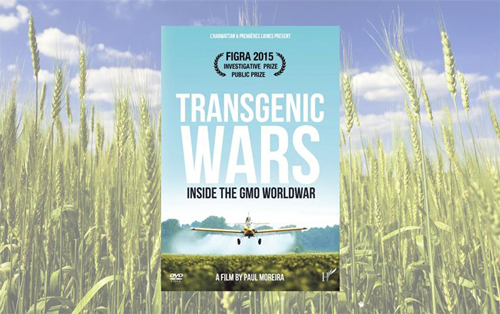
Transgenic Wars, an award-winning film by French investigative journalist Paul Moreira, takes us on a journey through Europe and Latin America, looking at the effects of genetically engineered crops, both on livestock and human health.
It also delves into tangential concerns, such as the increased use of glyphosate-based herbicides, atrazine and 2,4-D, the latter of which was an ingredient in the devastating defoliant Agent Orange, used during the Vietnam War.
Coincidentally, Monsanto was a leading producer of Agent Orange during the war, and its war contributions, which began with its involvement in the Manhattan Project and the creation of the atomic bomb, help explain how Monsanto has managed to secure such staunch allegiance from the U.S. government.
It’s a destructive and often incomprehensible allegiance that continues to this day, with the U.S. government’s support of and involvement in spreading Monsanto’s genetically engineered (GE) crops and toxic chemicals around the world – now repackaged as “necessary” for agriculture.
Monsanto, being a leader in GE seeds and the chemicals that go with them, receives a fair share of the attention throughout the film. Ecologist Patrick Moore, Ph.D., who made the unlikely transition from co-founder of Greenpeace to being a professional GE supporter and lobbyist, is also featured.
In a sensational video that has garnered more than 1.4 million views, Moreira suggested Moore drink a glass of Roundup to prove his assertion that the herbicide is completely harmless. Moore’s refusal, saying he’s “not stupid”, is included in the film.
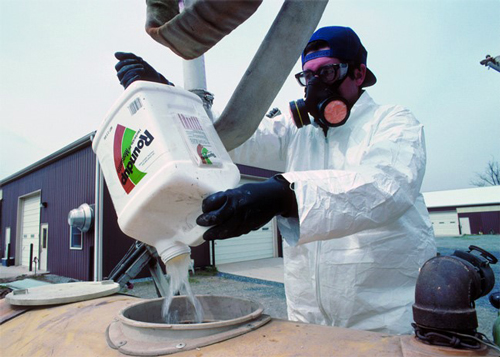
Danish Pig Farmers Struggle with Mysterious Swine Disease
The film starts off in Denmark, where pig breeders are struggling to determine the cause of a mysterious swine disease, simply referred to as “the yellow death”. The disease causes violent diarrhea, and is often lethal to the affected pigs.
Virtually all feed their pigs GE soy, and many suspect this may be the source of the problem.
Ib Pedersen is a long-time pig farmer in Denmark. When he first started feeding his pigs GE soy in the 1980s, the mix contained about 20 percent GE soy. Over the years, the ratio increased, and by 2002, about 90 percent of the soy in the feed was GE. Like other farmers, Pedersen struggled to contain “the yellow death”, which would kill up to 30 percent of the piglets born each year, until one day he decided to remove the GE soy from the feed mix. Within two days, changes were noticeable. There was not a single case of diarrhea among his pigs.
In the three years he’s been feeding his pigs all non-GE feed, he’s never had a single case of “the yellow death” again. Pedersen single-handedly managed to raise doubts about the safety of GE soy among Danish farmers. Interestingly, Pedersen may have identified the problem even more closely.
He noticed two intriguing connections:
1. When GE soy was sourced from Argentina, all of the farmers who received it ended up with outbreaks of diarrhea among their pigs. What was it about this Argentinian GE soy that was so much worse than others?
2. He found images of deformed Argentinian children online, which local doctors and scientists insist are caused by pesticide exposure, as many villagers are surrounded by GE fields where toxic chemicals are sprayed with wanton abandon.
He was struck by how similar these deformities were to the deformities found in his piglets. Could pesticide-contaminated GE soy be the cause of the pig farmers’ problems?
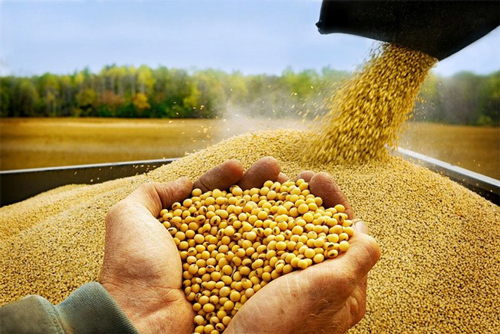
Transgenic Soy Destroying Argentina
Argentina is the third largest grower of transgenic crops in the world, and the second-largest producer of GE soy. GE crops have radically altered the face of the country. Transgenic crops have eliminated the need for large workforces on the farm, eradicating entire villages and contributing to massive poverty. Gone is the agricultural diversity Argentina used to boast, replaced instead by massive single-crop fields of GE corn, soy and cotton.
Moreira visits Avia Terai, a small rural village surrounded by GE fields. Here, children are born with strange maladies and degenerative diseases of unknown origin. One little girl has large brownish-black spots all over her face and body – marks she’s had since birth. Another is slowly wasting away from an undiagnosed degenerative disease thought to be genetic, aggravated by exposure to herbicides. Many of the children are deformed in one way or another. Many of the elders are dying from cancer.
The villagers refer to Monsanto’s Roundup as “the poison”, and do their best to avoid getting sprayed. They all fear the large tractor that sprays one of two things on the fields: water or herbicide, and there’s no telling what is being sprayed when.
One woman describes how she shuts herself and her children inside whenever she hears the tractor. Still, avoidance is difficult when you’re surrounded by fields, and spray drifts in the wind, settling in water and on clothes hanging out to dry.
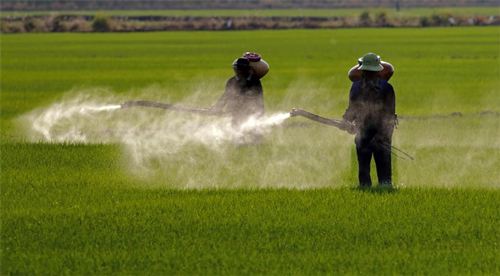
Argentinian Farmers Recognize GE Soy Cannot Be Used for Animal Feed
Tellingly, a GE farmer being secretly taped by Moreira reveals they do not feed this GE soy to any of their animals: “If you feed your chickens with it, you can no longer eat their eggs”, he says. When asked why, he says because the eggs smell so bad you cannot eat them. This is why all of his GE soy is exported.
Meanwhile, the nearby villagers suffer, being regularly fumigated. Efforts to dialogue with the GE soy farmers have led to naught, and the companies that own the fields are so rich, fines do not dissuade them from spraying well within the illegal perimeter of residential housing.
In the 15 years that transgenic crops have been grown in Argentina, there have only been three convictions for illegal fumigation, despite it being a common occurrence. In the case of Avia Terai, the village is only 200 meters (656 feet) from the transgenic soya field. By law, pesticides are not permitted to be used within 1.5 kilometers (just under 1 mile) of resident housing.
Their situation is not unique. In fact, the problem is so great, the Argentinian government has been forced to subsidize pesticide-induced disability centers to manage the growing health crisis. These centers are now filled with children from villages where the parents were exposed to agricultural chemicals. Overall, birth defects are about 350 percent higher in areas where GE crops are grown, compared to the rest of the country.
As noted by one of the nurses at a disability center in Saenz Peña: “We export our [GE] soy to your countries to feed the animals you are eating… But we are the ones truly paying the price for it.”
Retired pediatrician Dr. Maria Del Carmen Seveso goes so far as to call it genocide, saying the situation is really serious.
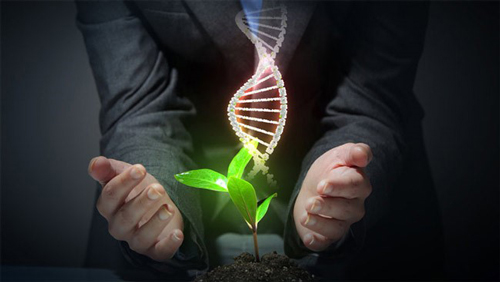
Deformed Children, Deformed Pigs – Are Herbicides to Blame?
It was images of deformed Argentinian children, posted on the internet, that got Pedersen, the Danish pig farmer, thinking. Like all other pig farmers, he had his fair share of deformed pigs being born. He hadn’t paid it much attention, other than to recognize that these things happen from time to time, but deformities had become more common, and he was struck by the similarities of the deformities he saw in the Argentinian children who’d been exposed to pesticides in utero.
When it comes to determining which pesticides are to blame, there are many open questions. As it turns out, glyphosate is not the only chemical being used on Argentina’s GE soy fields. As resistant weeds flourish, many farmers have resorted to adding other chemicals to the mix, and it’s unclear who’s using what. The synergistic action of chemicals will typically augment the toxicity of the mixture, compared to any given chemical on its own, but no studies have been done to determine the exact hazard level of various concoctions.
As Moreira comes across a tractor set to spray a field, he finds not only Monsanto’s Roundup, but also atrazine – which is banned in Europe but extensively used in the U.S. – and 2,4-D, one of the main components of the military herbicide Agent Orange, extensively used over the jungles during the Vietnam War.
One thing’s clear: The promise that transgenic crops would lead to “greener” agriculture and less chemicals has not come to pass. Instead, more and more chemicals are being used on Americans’ food and the feed they raise their livestock on.
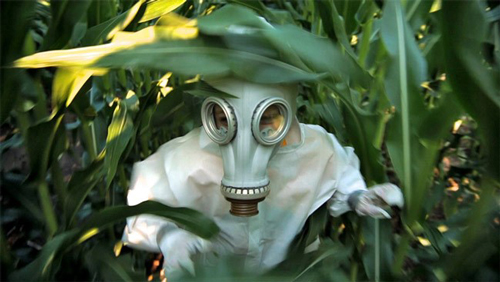
Mutant Enemies
As transgenic crops have taken over Argentina, herbicide-resistant weeds have become a serious problem. More than 30 million hectares (74.1 million acres) of GE soy is planted in Argentina, and glyphosate is applied to each field at least three or four times a year. This has spawned a whole new kind of weed – one resistant to glyphosate, just like the GE crop itself.
To address the problem, farmers not only apply more pesticides, they also mix different pesticides together to prevent the weeds from adapting to a single formula. As a result, anywhere from three to five additional chemicals are routinely added to the glyphosate. Newer GE seeds are also designed to resist even more toxic combinations.
As noted in the film, there’s no definitive proof that agricultural chemicals are responsible for the health crisis in Argentina. But there’s no evidence proving they’re not responsible either. And the government has done nothing to determine the truth.
In fact, the government of Argentina has been and continues to be very supportive of the GE industry, and Monsanto ads are commonplace on Argentinian TV, assuring the people their products are safe and effective. Meanwhile, no studies have ever been done to ascertain whether all of these chemical cocktails create dangerous interactions or cause the severe health problems now seen among children raised in agricultural areas.
Staggering Increases in Cancer
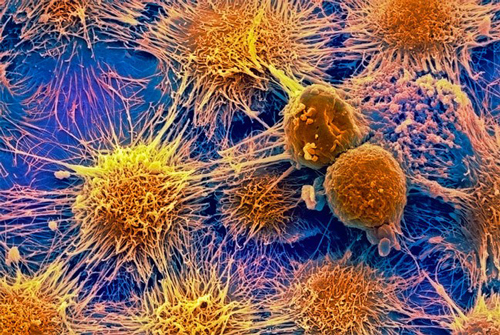
The only independently organized investigation of the health impact of GE crops, conducted by students of the Rosario Medical University, found that cancer rates increased by 40 percent in a single year in one village.
In another, the cancer rate shot up by 250 percent. What these villages have in common is that they’re surrounded by GE fields and the fumigation border is extremely close to where they live.
Sadly, Argentina’s economy is now fully dependent on transgenic agriculture. According to Alejandro Mentaberry at the Ministry for Science, Argentina made about $65 billion on GE crops between 1996 – the year GE crops were introduced – and 2011. Mentaberry believes the country owes its “miraculous economic recovery” to the export of transgenic crops.
But at what price this miraculous economic boom? In April 2014, Argentinians took to the streets in Cordoba to protest against Monsanto and the use of their products. “Monsanto out! Yes to life, no to Monsanto! Monsanto is poison. Monsanto is corruption”, the people chanted as they marched through the streets.
The film goes on to discuss the political powers that support and steer countries into accepting genetically modified organisms (GMOs).
For example, WikiLeaks revealed how U.S. government officials are secretly doing the chemical technology industry’s dirty work, cajoling and threatening governments with retaliation as needed. U.K. government officials have also been caught acting like lobbyists and spokesmen for the GE industry.
Transatlantic trade agreements also stand poised to dismantle any remaining prohibitions against the free flow of GMOs and toxic chemicals into Europe, where laws protecting human and environmental health are stricter than in the U.S. Depending on the final outcome of these agreements, it’s possible no country will be able to oppose GMOs in the future, no matter what the human or environmental cost.
Patrick Moore and Golden Rice
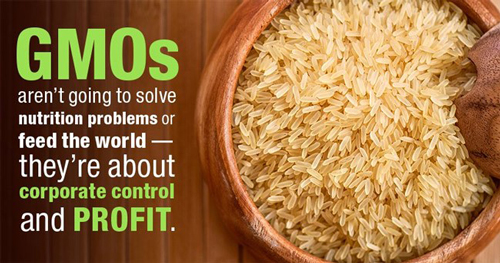
Moore, a former Greenpeace activist, has become a prominent adversary of the movement against GMOs. According to Moreira, Moore left Greenpeace 30 years ago on bad terms, and has since made a name for himself as a supporter of all things anti-nature, including the nuclear industry, the mining industry and the transgenic industry. “He also thinks global warming is great for the planet”, Moreira notes.
He’s been a leading advocate for GE Golden Rice, designed to contain high amounts of beta-carotene, ostensibly to combat vitamin A deficiency in Third World countries. There are problems though. For starters, beta-carotene is a fat soluble vitamin. According to the University of Maryland Medical Center, you need at least 3 grams of fat to ensure absorption of beta-carotene supplements.
This enriched rice is intended for impoverished nations where dietary fats are nearly impossible to come by with any regularity, thereby rendering this type of supplementation useless at best.
It’s also unknown whether the beta-carotene in Golden Rice will hold up during storage between harvest seasons, or whether traditional cooking methods used to prepare the rice will destroy the beta-carotene. Last but not least, the rice is still under development, and all claims are therefore little more than wishful thinking.
Such facts should have shut down the Golden Rice fairy tale right from the get-go, but it hasn’t stopped the likes of Moore from spending much time and effort to promote it, likening the refusal to approve Golden Rice to genocide and Greenpeace’s opposition to the rice “a crime against humanity”.
To Build a Saner, Safer Food System, Start Close to Home
The problems may seem insurmountable, but there are solutions. The fact of the matter is farmers do not have to use chemical cocktails to produce ample food. Many areas would need serious intervention to improve and rebuild soil quality, which has been destroyed by decades of mechanized farming and chemicals, but it can be done.
As an individual, you can help steer the agricultural industry toward safer, more sustainable systems by growing your own foods and buying what you cannot grow from local farmers you trust.
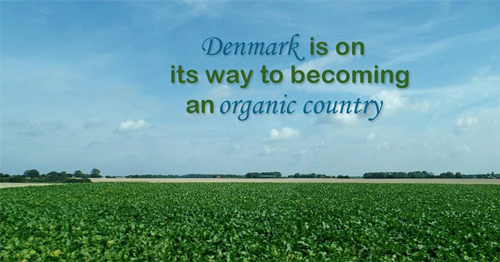
By far, processed foods are the most likely to contain GE ingredients, so avoiding processed foods of all kinds is one of the best ways to avoid them – and the chemical cocktails sprayed on these crops.
If everyone were to refuse to buy products containing GMOs, insisting on feeding their families pesticide-free, GMO-free foods, the food industry would have no choice but to respond.
They cannot stay in business if people don’t buy their goods, and if food companies refuse to buy GE ingredients, the chemical biotechnology industry will lose its financial power to corrupt and manipulate governments.
It’s really just a massive trickle-down effect, and the masses really do have the power, even though Monsanto and their allies would like you to think otherwise.
There’s a way out of this mess, and it starts with each person making different purchasing choices for themselves and their families. While many grocery stores now carry organic foods, it’s preferable to source yours from local growers whenever possible, as much of the organic food sold in grocery stores is imported.
yogaesoteric
September 14, 2018
